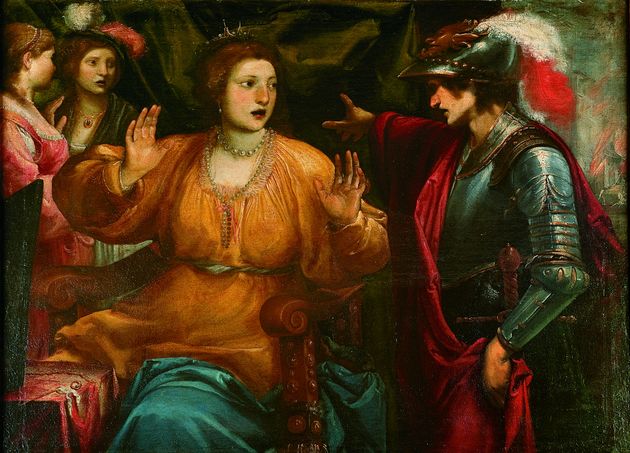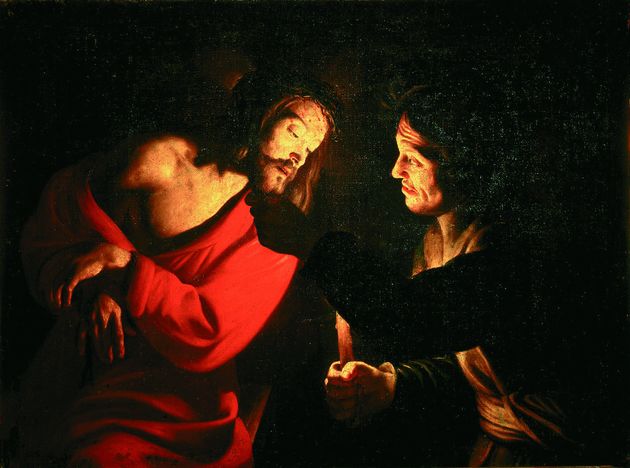The Spini family commissioned Santi di Tito to work to a complete restructuring of their suburban villa of Motrone (Peretola). Almost at the end of the works Alessandro Allori, who was at the peak of his career, also collaborated in decorating the chapel, completing some mural paintings perhaps after the death of Santi di Tito (1603), the author of the Multiplication of the Loaves and Fishes.
The artwork painted by Allory celebrates one of the miracles traditionally attributed to Saint John Gualbert, the founder of the congregation of the Vallombrosan monks: in a year of tremendous famine, a minute supply of wheat was left only in the monastery of Passignano. John Gualbert ordered its sharing: after having filled sacks of wheat for all the monasteries of the order, then for all the poor people arriving at the abbey, the barn still stayed full for a long time.
The composition of the painting the Miracle of the Grain was carefully planned by Allori, as is documented by the various preparatory drawings now in the Uffizi of Drawings and Prints. Allori, with many interventions from his workshop assistants, recreates around the imposing static figure of the saint a dynamic, lively scene, crowned by the fine landscape with the view of Vallombrosa abbey, where Saint John Gualbert had founded the congregation of Benedictine monks. As well as in the other altarpiece for the chapel, the artist inserts some clearly-characterised portraits into the composition: here he celebrates the children of Geri Spini, one of whom is looking out of the scene towards the viewer.






























